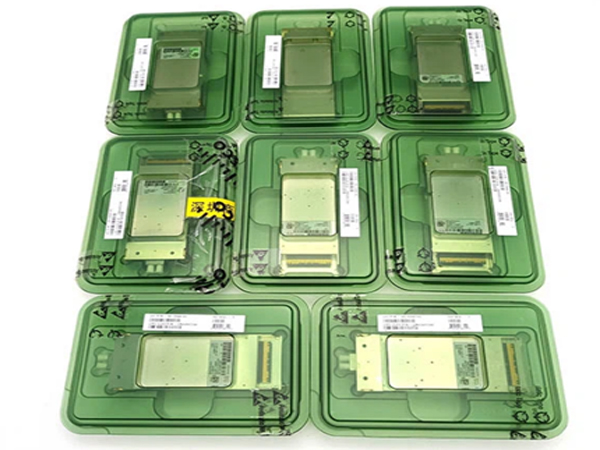
In less than 10 years, DWDM modules have come a long way, with optical devices becoming smaller and faster. Its rate has increased tenfold in the same time frame: from 40 gigabytes in 2011 to 400 gigabytes today, with 800 gigabytes of pluggable optical modules on the way in the near future.
The introduction of coherent optics is one of the most important innovations in the development of DWDM systems. Coherent optical devices use advanced optical devices and digital signal processors (DSPs) to send and receive complex light wave modulation, thus achieving high-speed data transmission. At a very high level, coherent modulation remains the driving force behind high-speed optical devices, including 400G and beyond.
The first commercially available coherent DWDM system is 40G, followed by 100G. These systems are based on line cards and chassis, and the ability to support many line cards in each system and take up the same space as the 10G rate product is a major step forward, which can now transfer 100G rates and longer distances. Over time, line card speeds have improved to 200 gigabytes or more, but with the advent of cloud providers, the industry is approaching an inflection point.
As cloud provider networks begin to grow exponentially, there is increasing pressure on manufacturers to create even smaller, faster, and cheaper network components. It was this inflection point that led to the creation of the "pizza box" DWDM system.
The "pizza box" system eliminates case and line cards. It is a physically small stand-alone system, a small data center switch with a height of 1 or 2RU (1.5 "-3"). The engineering key to the viability of the "pizza box" package was the separation of the two main components of coherent optical transmission: the optical device (laser, receiver, modulator, etc.) and the DSP (digital signal processor), which until now had been housed in large modules mounted on the in-line card.
Innovations in optics have led to the need for lower power consumption and smaller size components. These innovations resulted in the Pluggable CFP2-ACO (Analog Coherent Optical Devices), a relatively small size Pluggable DWDM module for CFP2. DSP technology is also evolving so that a single DSP chip can support multiple CFP2-ACO modules.
By placing multiple DSPs in a "pizza box" that can serve multiple CFP2-ACOs, manufacturers have produced systems capable of transmitting 2TBPS (20x100G client connection) within two rack units (3 inches). In contrast, a chassis based system would require 12 rack units. In addition to saving space, they are also more energy efficient.
Why CFP2-ACO is called "analog"? Aren‘t these systems digital ones and zeros? This is the brilliance of coherence technology, which modulates 1s and 0s into analog waveforms, packaging more data into each waveform, which can then be accurately decoded at the other end.
Of course, this is a very simple explanation of coherent signal transmission, but the key to the developer‘s purpose is the need to convert digital signals to analog signals to transmit data, and convert analog signals back to digital signals at the other end. CFP2-ACO can only process analog signals, it receives coherent analog signals from the DSP to be sent, or it transmits the coherent analog signals received to the DSP for conversion to digital signals.
CFP2-ACO systems are making progress in reducing space footprint, reducing power consumption, and reducing the cost of optical networking equipment, especially converters. These platforms have been widely adopted throughout the industry and have become the standard form of optical transmission in virtually every cloud provider network.
Since the introduction of CFP2-ACO based systems, vendors have introduced new, faster "pizza box" systems that do not rely on DWDM pluggable devices. Optical components and DSPs are located on small field replaceable modules or small line cards. These systems can support 600Gbps+ per wavelength.
At the same time, with the introduction of CFP2-DCO, pluggable coherent DWDM optical devices continued to be developed. "D" stands for "number" in digital coherent optics. Once again, the developers of coherent optics reduced the size and power consumption of the components, so that both the optical device and the DSP were housed in CFP2.
This eliminates the need for a rack to accommodate DSPs, allowing coherent DWDM transfers directly from routers or switches, which is the real turning point for DWDM and router convergence.
Coherent optical modules are now developed to 400G ZR and 400G ZR + in QSFP-DD packages, using the same technology as CFP2-DCO, but at a smaller size. Such a compact package accommodates 400G coherent DWDM optical devices, which indeed provides a feasible solution for routing and DWDM fusion.
